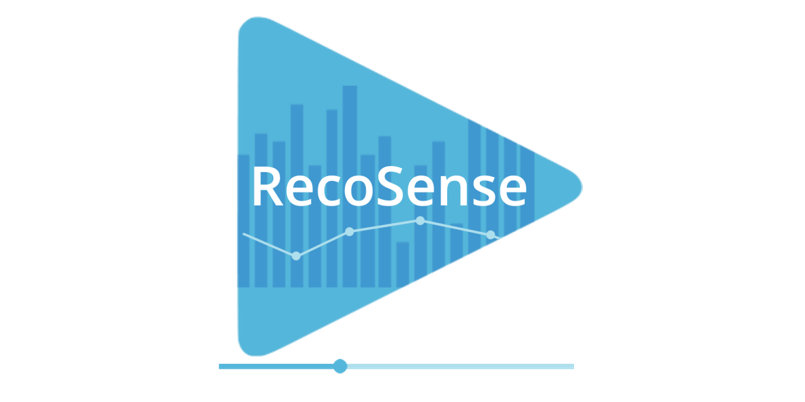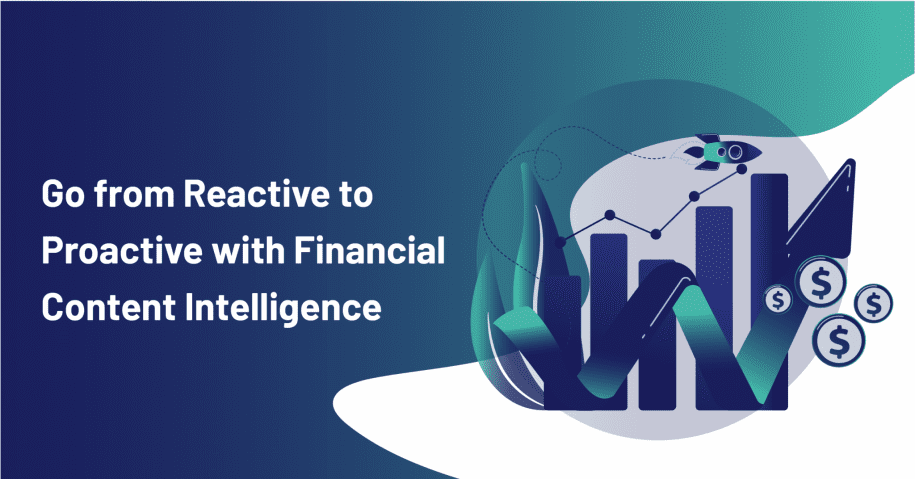The analysts, investors, strategists and the core finance team of any organisation are less aggressive and more responsive, especially when it comes to:
- Policy bias between what employees think they are doing and what they need to do.
- Dealing with the financial and investing structure of the organisation.
- Lack of transparency in corporate spending.
Virtually all stakeholders and financial institutions should become proactive rather than being reactive to financial information, so it’s high time to start working on positive methodologies.
Being proactive using Financial Content Intelligence means building relationships, promoting open communication and getting the job done with the right kind of effort and time using the right tools. It has the added benefit of anticipating problems before they occur, eliminating reactive reporting, responding quickly to adapting processes and procedures, and achieving a distributed work environment.
The need and benefits for all stakeholders to go proactive vs reactive:
- Avoid unnecessary, low-value manual, administrative and repetitive tasks that can lead to costly errors such as duplicate payments, lost credits and delayed operations.
- Effectively monitor mistakes, anomalies, process execution and other KPIs.
- To maintain transparency in the processes and start the automation based on real-time transaction management and reporting.
- Using data in motion (intelligent automation) for continuous improvement and proactive action.
- Deep dive into data-driven transaction analysis that provides a complete understanding of the broader financial situation.
Reactive vs Proactive Finance: Corrective Measures to be taken by the Team
There are two concepts here:
- The Circle of Concern, which comprises things that cannot be controlled.
- The Circle of Influence, a part of the Circle of Concern that comprises worries that can be controlled.
- In the business context, concerns could revolve around a customer’s health, investment strategies, market fluctuations, product deadlines and budgets. Only certain items can be controlled, like customer service response times and approved funds.
Proactive people focus on the circle of influence and spend time and energy on what is under their control. However, reactive people are engulfed in the circle of concern, which means they wait for occurrences to be acted upon instead of taking instant action.
Being reactive and stuck in the circle of concern decreases the ability to gain trust, build relationships and deliver their full value. For the proactive, there is a massive opportunity out there.
Why Induce a Proactive Approach?
Getting proactive with Financial Content Intelligence is a powerful and influential engine of communication and innovation. Finance is the central hub of activity across the company, and it affects analysts, investors and strategists.
- It considers all aspects of budgets for new updates.
- It markets paid to advertise.
- It considers sectoral indices, productive and positive investment strategies.
- It predicts and analyses similar companies.
- It manages internal finances, collaborating with all departments
- It proactively monitors all the companies and topics.
How does being Proactive Overcome Challenges for Institutions?
The challenges for financial institutions include:
- Unpredictability
- Creating analyst reports
- Analysis of massive data and sources
- Processing an influx of information
- Document processing
The financial sector uses content intelligence to change how all businesses approach their audiences, investors and other stakeholders.
Content intelligence is the next revolution in delivering experiences by financial organisations to audiences, enhancing their trust in financial institutions and deepening their knowledge of finance. It is highly beneficial in:
1. Content intelligence customer service
The Content Strategy Platform (CSP) can use customer/audience responses to extract topics that are of interest to customers, analysts, investors and strategists. If there is something they want to know but don’t have the language to ask, AI helps create updated content that helps them at a deeper level.
2. Individualised attention – content marketing AI
- Content intelligence helps predict certain offers and helps create innovative sales funnel paths individualized to each customer.
- Banking AI tools can use NLP and ML to study the patterns created by people who want to invest, open a new account, buy a home, or fulfill any financial demand.
- It can recommend significant pieces of content rendering a more granular context within a funnel.
- Each video, podcast, article, or any piece of content can have a few roles to play, making it easier to measure ROI for every part of the structured content and the whole campaign.
3. Can help in identifying the needs of the customer
Content consumption patterns can depict how conscious the customers are about values. Content intelligence platforms can significantly improve the effectiveness of conversion offers by pre-reading the signal. Content intelligence enables financial marketers to help their audiences with fundamental, timely and reliable information.
How to unleash the Proactive vs Reactive Power of Financial Content Intelligence
There are three things to work more proactively with:
1. Communication lines and tracks should be open in all directions
That means creating clear, easy-to-understand content related to policies and budgets to use and communicating them early and more often. It means proactively monitoring all the companies and topics and letting other departments know what is needed from them to be successful.
2. Break down silos
To understand individual quirks and priorities and develop strategies for how best to work within them. Another essential component is to cultivate strong working relationships with the leaders and decision-makers to get a ground-level view of what’s going on inside their departments. This kind of approach can help strengthen the Financial Content Intelligence sector.
3. Invest in AI-based tools like NLP
It is highly recommended to leverage NLP solutions that empower organisations to act immediately and not later. AI through NLP can:
- Automate reconciliation and code transactions upfront to eliminate tedious manual labour.
- Integrate specialised platforms with the existing software to unify the entire workflow.
- Adopt intelligent payment systems to streamline processes and reduce friction.
- Have controls coded into the software tools to ensure that all transactions comply with company policy.
- Proactively enforce policy and pursue higher-impact work across the company.
- Assist the analysts, investors and strategists in processing an influx of information more efficiently and in reaching proactive insights faster.
- Proactively monitor all the companies and topics the organisation is responsible for, all in one place.
- Highlight updates using AI alerts to client
s outside the platform. - Curate a customised view of the companies, industries and topics to track.
- Frequently update content to assist the analysts in transforming their workflow and make it available almost every day, the first thing in the morning.
- Filter out the unwanted data and simplify content by gaining access to exclusive information sources only. This renders a competitive edge in the market, where synthesising proactive insights and reading dense reports is still daunting.
- Enable SEO-friendly content with optimized keywords.
Conclusion
This kind of proactive vs reactive approach with Financial Content Intelligence doesn’t just happen in a day. It takes intention, discipline, and a massive hoard of communication to upgrade the skill. A proactive approach with Financial Content Intelligence will enable and empower an organisation to develop effective relationship building, open communication, and invest in tools that enable creativity and growth.



Leave a Reply